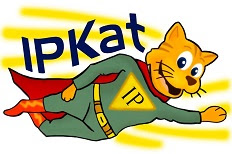I have the wonderful experience and indeed the privilege to have been invited to participate in the European Intellectual Property Teachers’ Network (
EIPTN). The aim of the network is to share good practices and ideas that benefit in not only the classroom but also education in general.
My contribution was on how the IPTango blog has helped me as a student, researcher and teacher in the area of IP. As you can see, I needed to start from who I am, and share my journey.
Blogs as communication technologies
I can confidently say that today we apply communication technologies in our classrooms, in our networks and even with family. It has become part of our lives. On education, it has improved our classroom with spaces that are open and flexible in the learning and teaching process. While we may agree that such tools can be used as ‘learning tools’ as the literature assert, I wanted to bring something else to the table, that of ‘inclusivity’.
I am from Venezuela and of course I am a minority in the English classroom but also I have a learning difficulty, I have dyslexia – again an ‘existing’ minority in the classroom. Certainly, as a student I felt alienated. Consequently, the impostor syndrome hit me (and still does, I am not going to lie) until the beautiful journey of a blog started.
My formed LLM supervisor introduced me to the IPKat and the most new (at the time) Latin America blog IPTango.
These were my steps:
1.- Knowledge construction: I used the blogs for education purposes. I learnt from them, as they were short pieces (digestible to me) – they were readable, the layout, colour and images were appealing to my mind. Once I felt comfortable, I move to the next stage
2.-Collective Knowledge: reading the comments was in another league! So many ideas, controversial opinions, discussions where I started to open with confidence my ‘critical analysis’. The blog provided me with a space to do so by the construction of knowledge from different perspectives.
3.- Reflective writing: I was brave enough to write a comment myself :) - but hey, making sure that mine was not the first one. The reflective writing came by acquiring the collective knowledge from both blogs, mainly I was enlighten by the legislation in Europe but reflecting on how on EARTH are we planning to practice this in Latin America, let alone in Venezuela. Why do we keep ‘borrowing’ legislations? Can we just not take good practices and see how we can build proper procedures to our society?
The whole process made me feel a part of a community. I started to feel that I was included in the conversations, I felt representing a region – we did have a voice.
From a student to a teacher
I notice that a blog is more conversational (although I do not see many comments in the actual IPTango post, I do receive private messages, invitations, collaborations, etc apart from 99% junk messages). I also feel that the relationship between teacher and student becomes better using this tool, as a student I have great conversations with my teachers about recent post and now as a teacher there is not a class that someone will note a ‘recent post’. To extend the area, I invite my students to follow blogs as part of the further reading, my natural instinct is to follow the IPKat cousins (or friends) but I am sure everyone have their own favourite.
Facilitating bridges
Blogs are a knowledge generator, it is a learning tool, it includes everyone and in all honesty, there is so much info out there that is not ‘legit’, that I rather guide them before they go surfing in troubled waters.
Foreign students in EU classrooms come to this region to learn and therefore the information and knowledge must be of the region. However, are we as teachers not facilitators too? We need to encourage students at large to reflect in their learning. In the classroom, it works both ways: the foreign students may find their own voice by reflecting on their society. Local students get to know other societies and cultures. We then facilitate the classroom, corridors and cafeteria for that rich dialogue start among students. The use of a blog then creates a bridge in the students’ community. It allows the participants to create arguments, contradict practices, express hypothesis, or if to shy, by just reading and listening a blog builds on them knowledge and acknowledge their presence.
The full EIPTN Conference papers can be found
here.



















